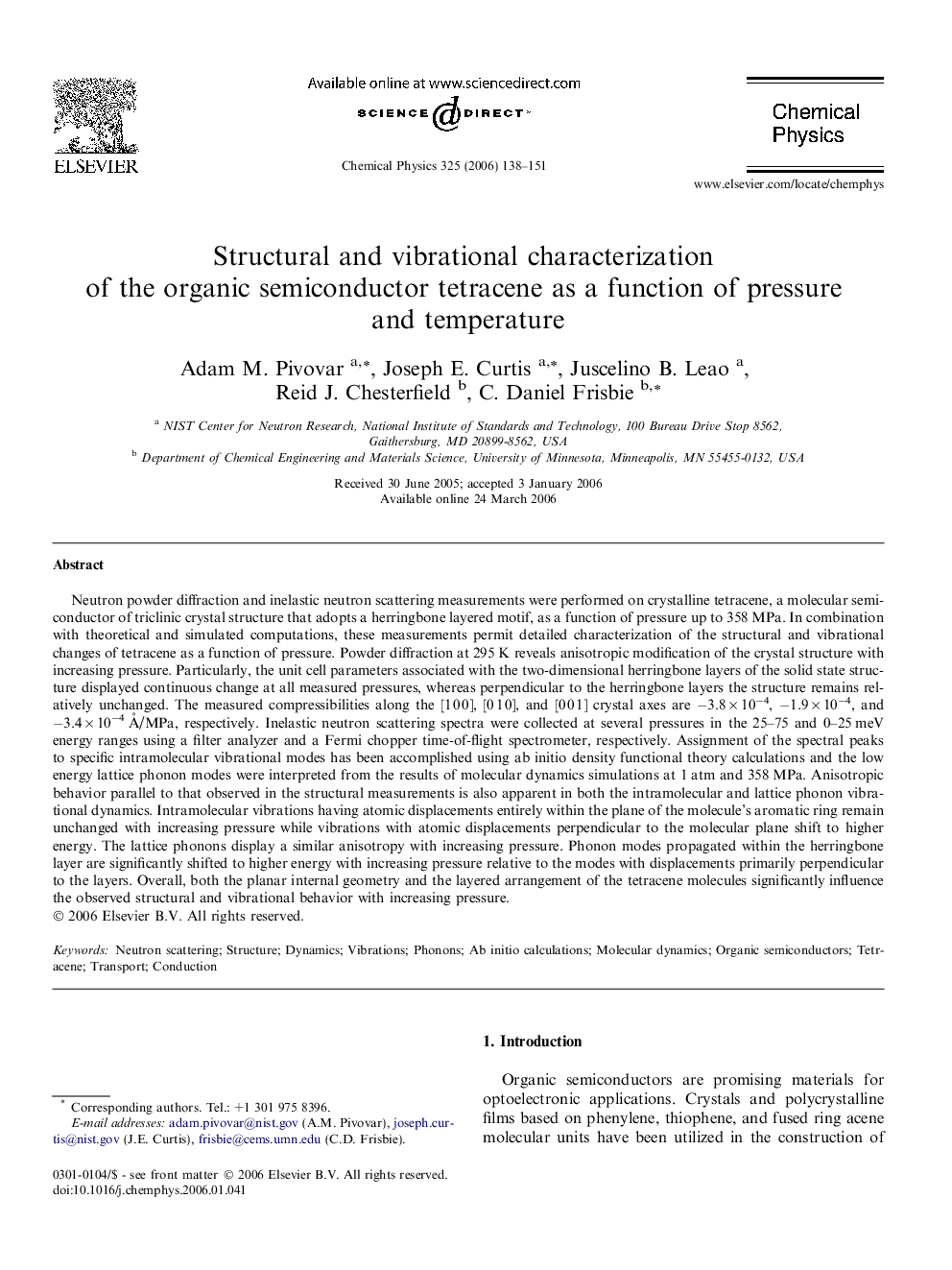| Article ID | Journal | Published Year | Pages | File Type |
|---|---|---|---|---|
| 5377120 | Chemical Physics | 2006 | 14 Pages |
Abstract
Neutron powder diffraction and inelastic neutron scattering measurements were performed on crystalline tetracene, a molecular semiconductor of triclinic crystal structure that adopts a herringbone layered motif, as a function of pressure up to 358Â MPa. In combination with theoretical and simulated computations, these measurements permit detailed characterization of the structural and vibrational changes of tetracene as a function of pressure. Powder diffraction at 295Â K reveals anisotropic modification of the crystal structure with increasing pressure. Particularly, the unit cell parameters associated with the two-dimensional herringbone layers of the solid state structure displayed continuous change at all measured pressures, whereas perpendicular to the herringbone layers the structure remains relatively unchanged. The measured compressibilities along the [1Â 0Â 0], [0Â 1Â 0], and [0Â 0Â 1] crystal axes are â3.8Â ÃÂ 10â4, â1.9Â ÃÂ 10â4, and â3.4Â ÃÂ 10â4Â Ã
/MPa, respectively. Inelastic neutron scattering spectra were collected at several pressures in the 25-75 and 0-25Â meV energy ranges using a filter analyzer and a Fermi chopper time-of-flight spectrometer, respectively. Assignment of the spectral peaks to specific intramolecular vibrational modes has been accomplished using ab initio density functional theory calculations and the low energy lattice phonon modes were interpreted from the results of molecular dynamics simulations at 1Â atm and 358Â MPa. Anisotropic behavior parallel to that observed in the structural measurements is also apparent in both the intramolecular and lattice phonon vibrational dynamics. Intramolecular vibrations having atomic displacements entirely within the plane of the molecule's aromatic ring remain unchanged with increasing pressure while vibrations with atomic displacements perpendicular to the molecular plane shift to higher energy. The lattice phonons display a similar anisotropy with increasing pressure. Phonon modes propagated within the herringbone layer are significantly shifted to higher energy with increasing pressure relative to the modes with displacements primarily perpendicular to the layers. Overall, both the planar internal geometry and the layered arrangement of the tetracene molecules significantly influence the observed structural and vibrational behavior with increasing pressure.
Keywords
Related Topics
Physical Sciences and Engineering
Chemistry
Physical and Theoretical Chemistry
Authors
Adam M. Pivovar, Joseph E. Curtis, Juscelino B. Leao, Reid J. Chesterfield, C. Daniel Frisbie,
